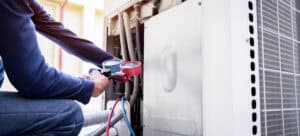As the seasons turn, the comfort and safety of your home rest squarely on the shoulders of your HVAC system. Preparing this crucial equipment for the demands of the coming weather isn’t just a good idea—it’s the most effective way to ensure reliability, maximize energy efficiency, and prevent stressful, mid-season breakdowns. By taking a proactive approach before the first frost or the first heatwave, you can take control of your comfort and your utility bills.
When autumn leaves begin to fall, your focus should shift to your furnace. You don’t want to wait for the first truly cold night to discover a problem. Simple actions, like ensuring your vents are clear and testing the system early, allow your furnace to distribute warm air freely and effectively. Changing the filter is a fundamental step that directly impacts your energy consumption, while checking your carbon monoxide detectors is a non-negotiable safety measure before you start relying on your heat.
Likewise, as winter thaws and warmer weather approaches, your air conditioner needs to be ready for its marathon season. An annual professional tune-up is your best defense against summer breakdowns, allowing an expert to address refrigerant levels and clean internal components you can’t reach. Simple homeowner tasks, like hosing down the outdoor unit to clear away winter debris and sealing air leaks around windows, ensure that the cool air your system produces actually stays inside your home, keeping you comfortable without wasting energy.
Preparing for the Colder Months:
Before the first frost, it’s crucial to ensure your furnace is ready to keep your home warm and safe. A few simple steps can make a significant difference in performance and energy efficiency.
- Replace Your Air Filters: A clean filter is fundamental for efficient operation. Dirty or clogged filters restrict airflow, forcing your furnace to work harder and increasing energy consumption. It’s a simple change that improves both efficiency and indoor air quality.
- Clear and Clean Vents: Walk through your home and ensure that all heating vents and registers are open and clear of furniture, rugs, or other obstructions. This allows warm air to circulate freely and prevents unnecessary strain on your system.
- Test Your System Early: Don’t wait for the first cold snap to discover a problem. In the early fall, turn your thermostat to “heat” and set the temperature a few degrees above the current room temperature to make sure everything kicks on properly. Listen for any unusual noises and confirm that warm air is being distributed.
- Check Safety Devices: The heating season is a critical time to test your smoke and carbon monoxide detectors. Ensure they have fresh batteries, as a malfunctioning furnace can pose a carbon monoxide risk.
- Keep the Outdoor Unit Clear: If you have an outdoor heat pump, make sure the area around it is free from leaves, twigs, and other debris. For central air conditioning units, cleaning the area around the condenser and using a proper cover can protect it from winter snow and ice.
Getting Ready for the Warmer Weather:
Just as you prepare for winter, getting your air conditioner ready for summer is essential for a cool and comfortable home.
- Schedule a Professional Tune-Up: An annual inspection by a certified technician is one of the best ways to ensure your AC is in peak condition. They can check refrigerant levels, clean internal coils, and identify small issues before they become major problems.
- Clean the Outdoor Condenser: The outdoor unit can accumulate dirt and debris over the winter, which can obstruct airflow and reduce efficiency. Gently hose down the unit and ensure there is at least two feet of clear space around it.
- Inspect and Clean the Drain Line: A clogged condensate drain line can cause water to back up, potentially leading to water damage in your home.
- Check for Air Leaks: Seal any gaps around windows and doors to prevent cool air from escaping. Leaky ductwork can also significantly reduce your AC’s efficiency.

